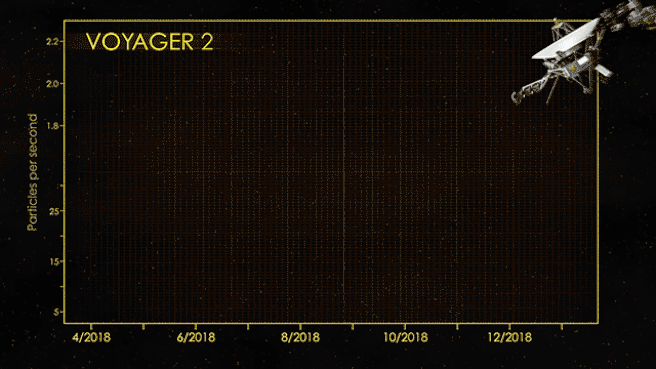Voyager 2 probe has reached interstellar space
The American space agency NASA says that Voyager 2 has left the heliosphere behind and is now in interstellar space. This is the part of a galaxy where there are no stars and planetary systems.
NASA reports that the most convincing evidence for the conclusion that Voyager 2 has passed the heliosphere comes from data from the Plasma Science Experiment, an instrument on board the probe. Until recently, the space around Voyager 2 was filled with plasma from the sun. This instrument detected a strong decrease at the beginning of November in the speed of the solar wind particles. After that, the plasma instrument did not detect any solar wind at all in the vicinity of Voyager 2, so that scientists are convinced that the probe is in the interstellar space.
Data from three other instruments, including the cosmic radiation measuring Cosmic Ray Subsystem instrument and the Low Energy Charged Particle instrument confirm the conclusion that Voyager 2 has left the heliosphere behind. The heliosphere is the name for a protective part where the solar wind predominates, with particles and magnetic fields. In the outer layer of the heliosphere, the solar wind is curbed by the pressure of interstellar gas.
NASA reports that Voyager 2 is now at a distance of 18 billion kilometers from the earth. Communication with the probe is still possible; even though the signals go at the speed of light, they are still traveling for 16.5 hours between the probe and the earth. Voyager 2 has been in interstellar space for some time. Both probes generate current through the decay of radioactive material, in the form of thermoelectric radioisotope generators.


